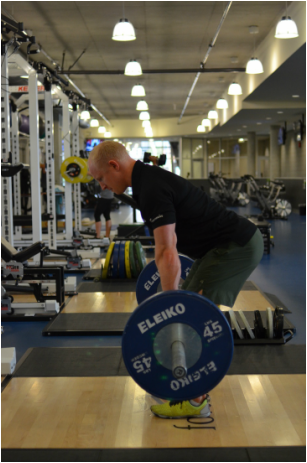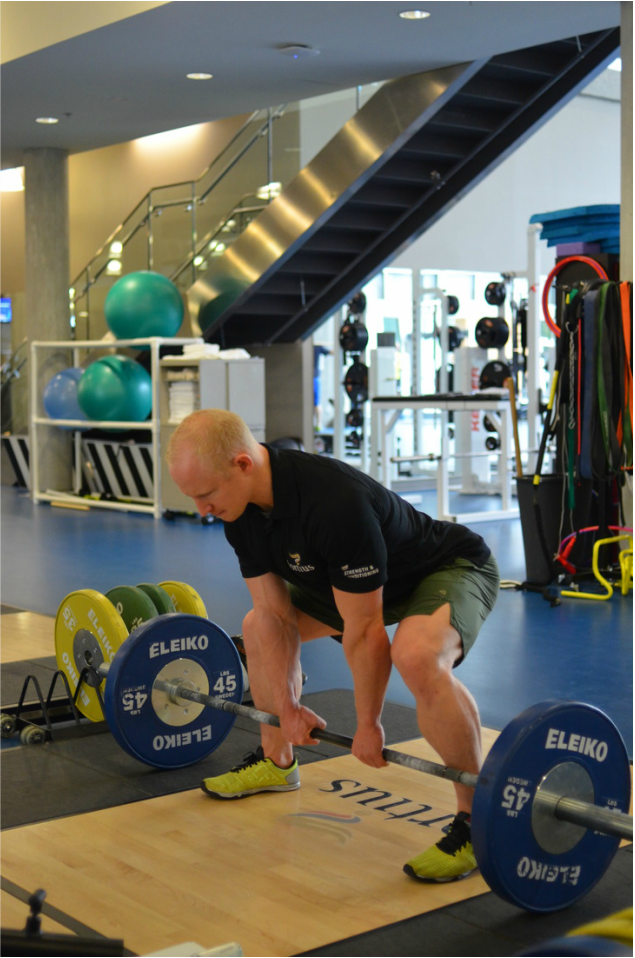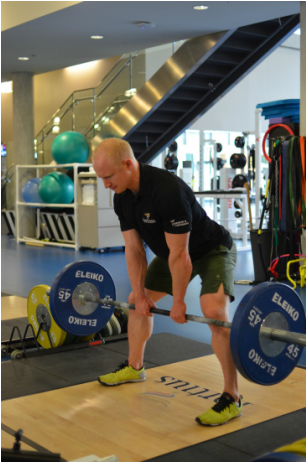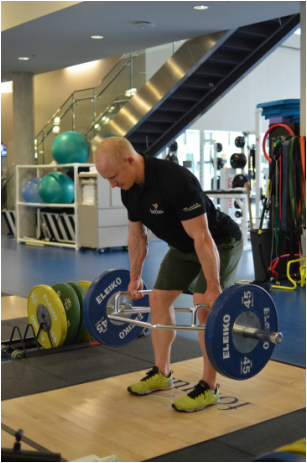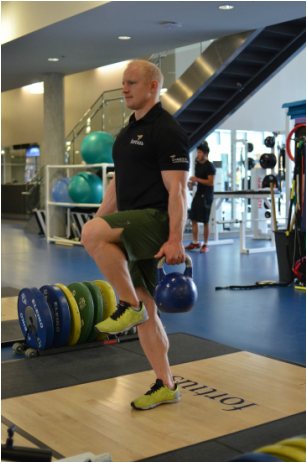Over the next three Mountain Fitness columns we’re going to break down the lifts we outlined in last month’s “The 3 Most Important Lifts for the Hunter” article. But before we dive into the deadlift in depth, some clarification seems to be required. The exercises we listed last month certainly stirred up some debate and criticism in the online community, and to be honest we’d be lying if that wasn’t part of the intent. To those that shared their opinions on various forums or through email, we thank each and every one of you, whether the feedback was positive or negative. In our opinion debate and dialogue are the very foundation of critical thinking and problem solving, so whether you agreed with our stance or not we’re glad to see the article sparked some debate.
But we 100% stand by our chosen exercises and the principles that form the basis for selecting those three lifts.
We also stand by our recommendation to seek coaching or training in the deadlift and its variations as well as the Turkish Get-Up. These are complex exercises that require sound technique and preparation before seriously incorporating them into a training program. Although we showcased some images from Strong First and included them as potential resources for our internationally distributed readership we are not affiliated with them in any way whatsoever. We do however believe they have one of the most hunting applicable training philosophies out there given their motto “Strength Has a Greater Purpose”.
And this brings us full circle, back to the rationale behind the lifts we chose as the most important for the hunter athlete. If your goal is to simply be as strong as possible there is nothing wrong with squats, bench presses, military presses or many of the other widely accepted strength and conditioning exercises. We cannot be more emphatic on this point; those are not BAD exercises in any way and can be invaluable depending on your training goals. But this is the whole point. The lifts or exercises you utilize to prepare yourself for your given task or activity must be goal based and task specific (remember the principles we outlined in Expect the Unexpected). As we have mentioned on numerous occasions throughout the Mountain Fitness column, the demands of hunting in the mountains or deep backcountry wilderness areas are unique and require a broader range of cardiovascular and neuromuscular proficiency than simple endurance or what we would consider “surface level strength”.
The added layer of complexity we also need to consider here are the postural and functional repercussions of modern life. Most of us sit too much and spend the bulk of our year walking around on flat, uniform surfaces. This could not be further from the realities of the backcountry environment. Our strength and conditioning program must take this into consideration. The lifts we chose serve multiple purposes and this is why they make the top three. Each and every one them is both directly transferable to the demands of mountain hunting but also reduce the negative postural and functional adaptations to living a softer, more sedentary life. If you live “off-the-grid” and hunt, fish, trap and farm or forage the bulk of your food then you don’t need these lifts. Frankly, you don’t need any training program other than living! But for those of us that that are not fortunate enough to live a more “traditional” life, our exercises need to both break down the negative adaptations to modern life but also make us stronger, fitter and more durable.
So without further ado, below you’ll find the key anatomical points about the deadlift, as well as some hunting specific deadlift variations and the essential coaching cues to complete the lifts properly. This month we’ve enlisted the input of one of our colleagues, a highly trained strength and conditioning professional and avid outdoorsman…and one hell of a beast in the gym.
Enter Bryce Hafso, BSc. Health and Fitness Mgmt, CSCS, NCCP:
The Deadlift Justified
The deadlift defines an individual’s overall brute strength very accurately. The act of picking up “dead” weight from the ground while maintaining a rigid torso reaps incredible benefits to the overall strength, durability and true functional capacity of the posterior chain in the human body. Of all the possible barbell strength exercises the deadlift has the highest tested recruitment of muscle activation for the hamstring group, gluteus maximus, spinal erectors and numerous other spinal stabilizers.
It is one of the most applicable to hunting lifts one can accomplish in the gym.
Deadlift Variations and Coaching Cues
Conventional Deadlift – Stand in front of the bar with your torso erect and feet directly under the hips. Grip should be shoulder width apart, just outside the feet. This is the best mechanical position for picking up the heaviest weight possible, as well as the most functional and commonly used movement outside of the gym (aka in real life).
Sumo Deadlift – Widen your stance a foot wider than shoulder width apart (usually around twice as wide as the conventional deadlift). Grip is 8-10” apart inside foot stance. This variation builds strength in the adductors, gluteus medius and other muscles surrounding the pelvis that the conventional deadlift does not target as specifically. Commonly used as a strength tool for improving the conventional deadlift. Good option for individuals with mobility issues.
Trap Bar Deadlift – Same foot position as the conventional deadlift. The feet should be in the centre of the trap bar. Grip is on either high or low handles of the trap bar in neutral stance. This variation is a hybrid of the squat and the deadlift, involving more contraction force from the quadriceps. It is a great option for individuals with mobility issues, or taller athletes with less mobility in their posterior chain (the musculature spanning the rear aspect of the body such as the calves or hamstrings).
Single Leg or Romanian Deadlift – Stand on a single foot, focus on maintaining the arch of your foot by driving weight through your heel. This accessory movement for the deadlift adds the benefit of increasing single-leg stability and strength in the hamstrings while sparing the spine. The “braced” position allows for a greater load to be used (and greater prime-mover muscle activation) and prevents balance from being the limiting factor of the movement.
Universal Coaching Cues
- Hip hinge and guide your hands to grasp the barbell in a pronated grip (palms facing down), or one pronated and the other one supinated (palm up). This alternate grip is usually performed when weight is too heavy for grip strength to handle maximal weight sets. Maintain lumbar (low back) rigidity and retracted shoulders by leaning back into your heels and leveraging your body weight against the weight to be pulled.
- Keeping your eyes focused on an object approximately 3 feet ahead of you to maintain a neutral spine from the neck to the low-back, begin the concentric (lifting) phase of the lift by visualizing yourself driving your heels into the ground and “spreading the floor”, keep the bar path as close to the body as possible and maintain postural integrity throughout the completion of the lift.
- The lift has finished when gluteus maximus is successfully in full contraction with the hips fully extended. This is where a lot people cheat themselves on the deadlift, make sure to truly finish the lift! The shoulders, hips and knees should be in alignment, the eccentric phase (lowering) of the lift may now be performed.
- When lowering the weight, simply hip hinge and guide the weight back to the floor maintaining contact with the body and maintaining lumbar integrity until the weight fully returns to the ground.
Conclusion and Main Points
- The Deadlift is an integral and highly effective strength and muscle mass building exercise that facilitates a very high neural endocrine (muscle building hormone) response in your body.
- It is important to understand the kinesiology of the exercise, as described in detail above.
- Correct form is very important. The keys are keeping your spine straight throughout the entire exercise, keeping the barbell close to your legs at all times, and inhaling during the beginning of both the concentric and eccentric phases, and exhaling slowly once you have started to move the weight.
Bryce Hafso
BSc. Health and Fitness Mgmt, CSCS, NCCP
Strength and Conditioning Coach
Hunting Fitness Correspondent for The Journal of Mountain Hunting
Adam Janke
Editor in Chief
FMS 1 & 2
Matt Thompson
Field Editor
FMS 1


